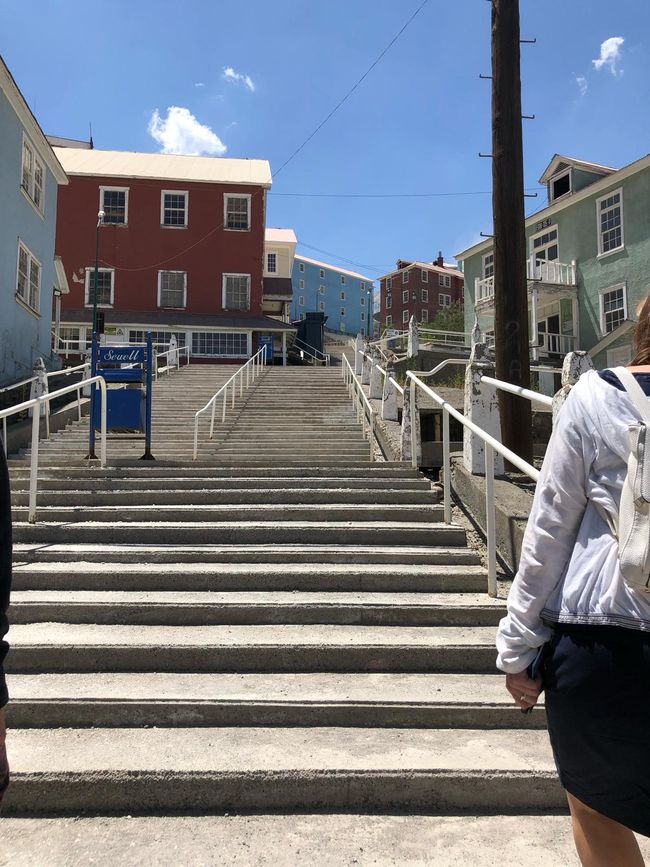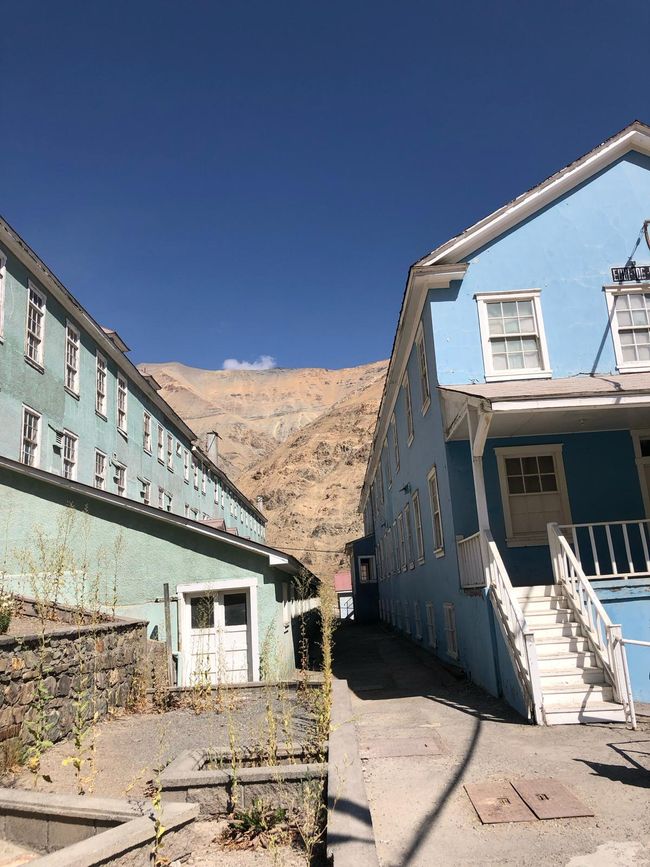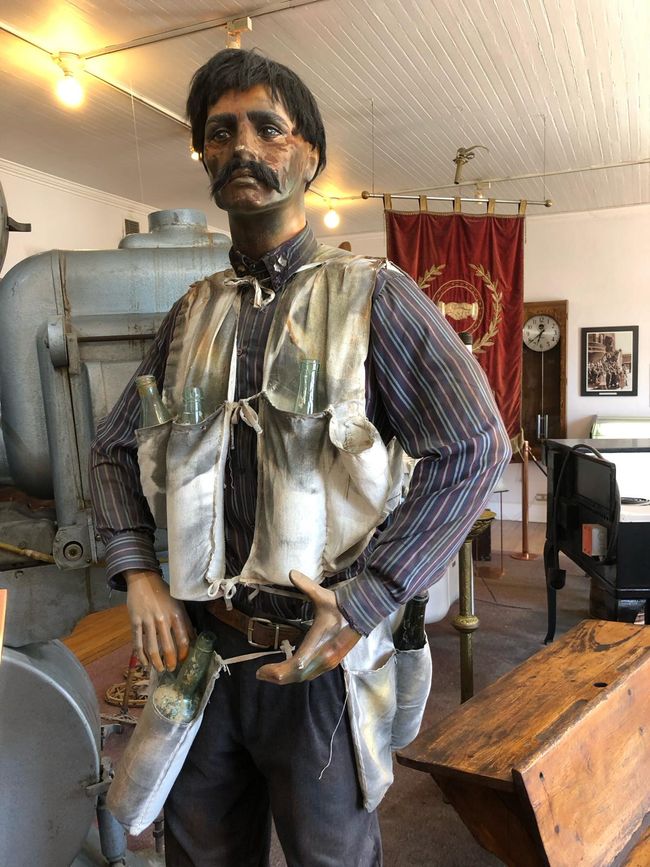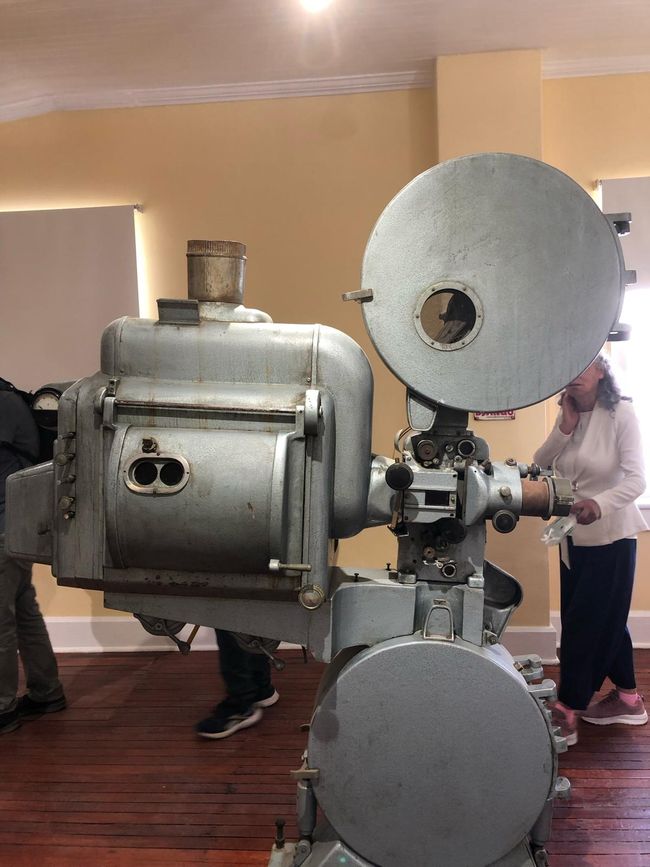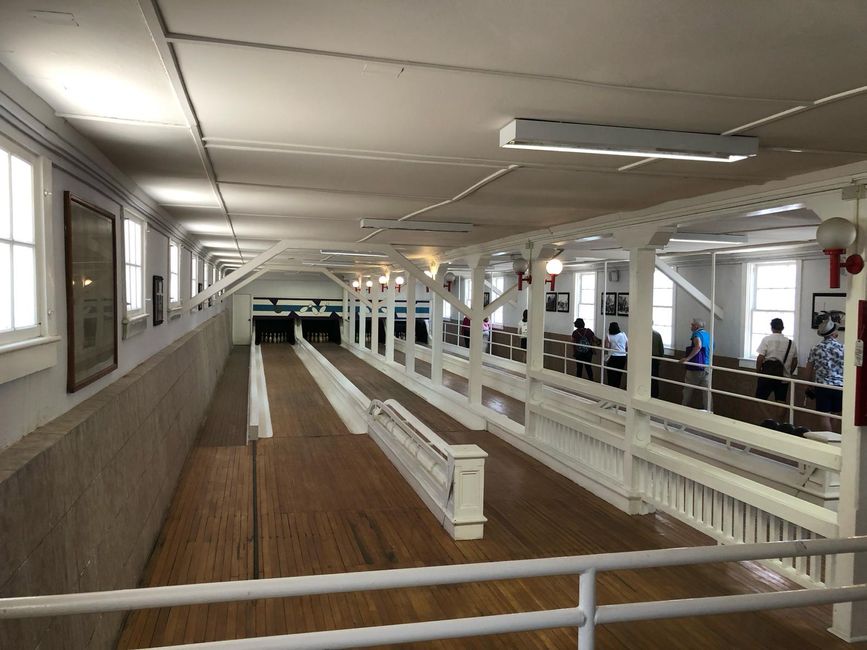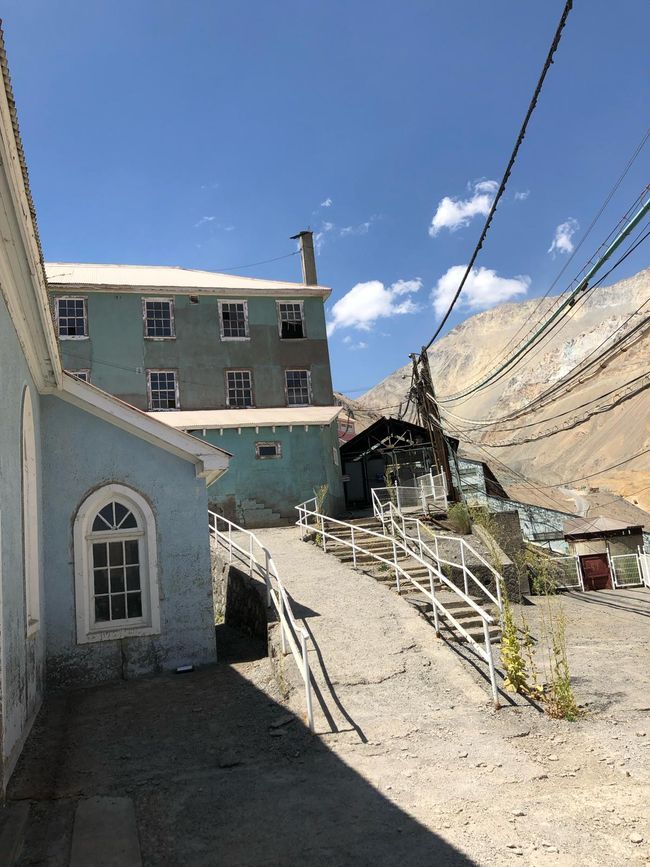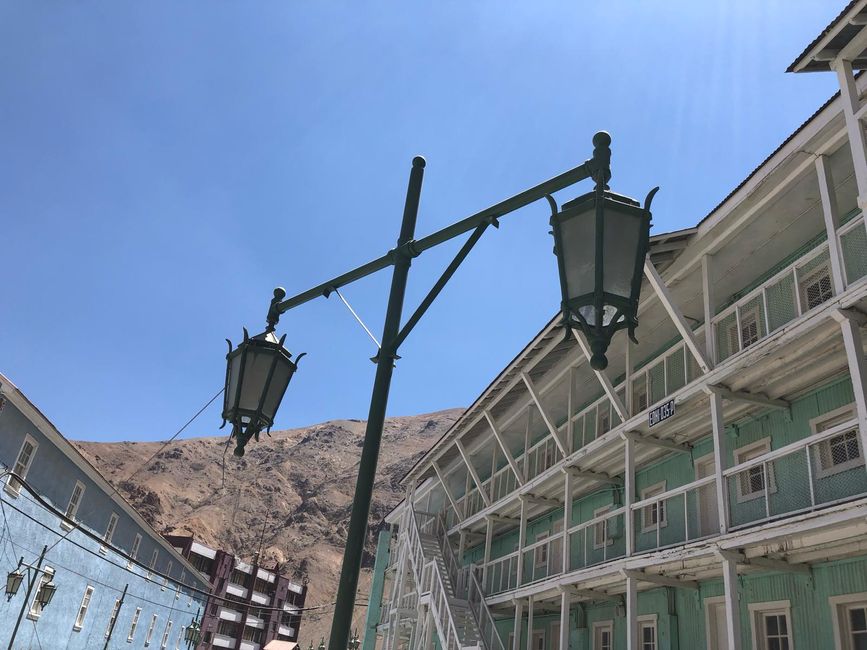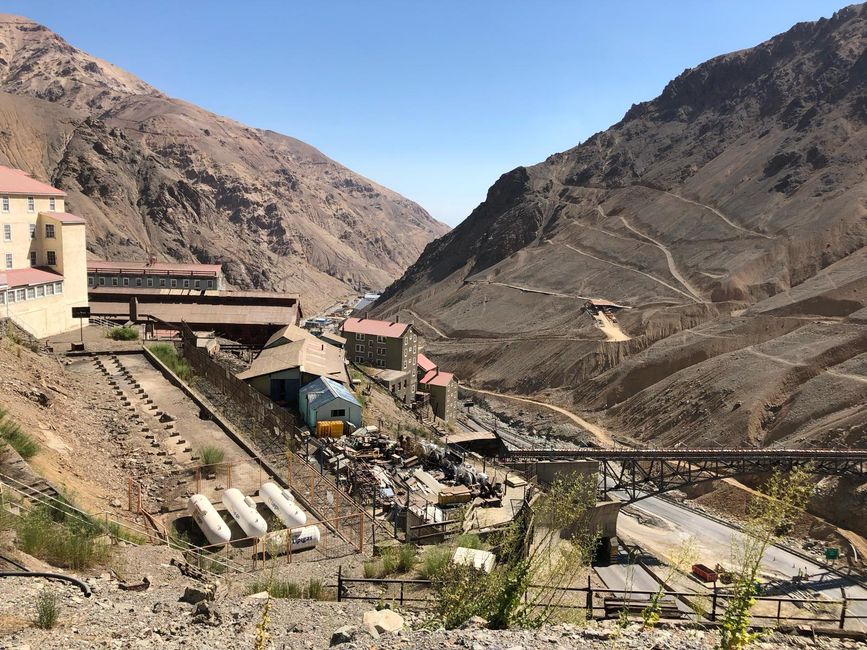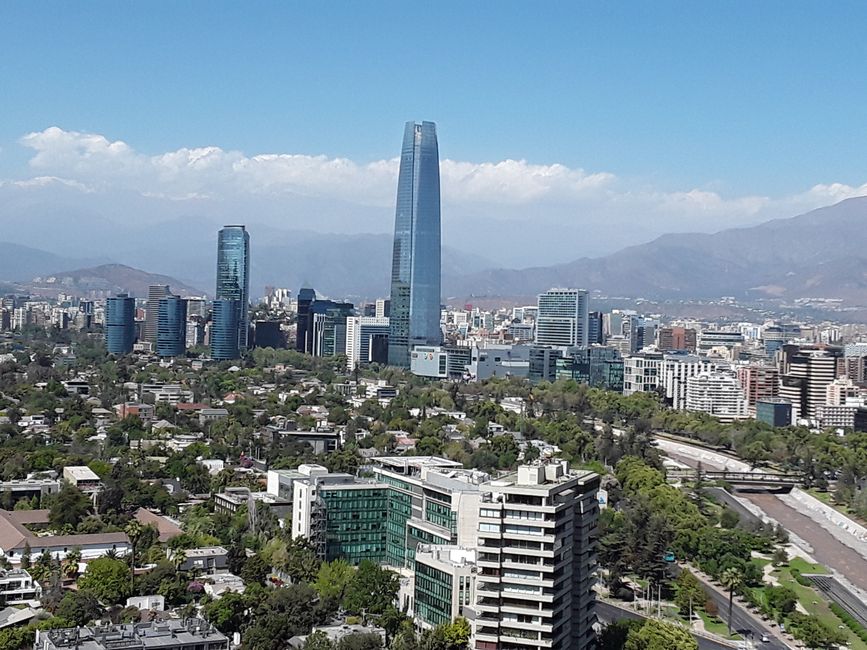
Chile 2. + Kreuzfahrt-Suedamerika
vakantio.de/chile-iikreuzfahrt-suedamerika
02/11/2024 Sewell (copper mine)
ప్రచురించబడింది: 14.02.2024
After a very extensive breakfast in the hotel (included in the price) with a good selection, including fruit and cakes, we checked out and drove, of course again with a Huber, to the departure point for our day tour. The foundation that organized these tours was based in the building, a small house that resembled a suburban apartment building.
Here we were taken to a waiting area where a video about Sewell was playing. About 30 people were there waiting for the tour to start. Everyone was recorded by name, including passport numbers, and we had to sign to confirm our presence and information about behavior during the trip. At 71 years old, I actually shouldn't have taken part, but Franziska made me younger when I registered; 70 was the limit. If there had been a direct inspection, I would probably have been canceled!? My risk, but it worked! The big bus leaves promptly at 9:30 a.m. Our guide apologized right from the start that she had to explain everything in both Spanish and English and that there would therefore be delays.
So now to the history of this mine: An American who was in Chile around 1900 as a representative of his company happened to meet a Chilean engineer who told him about the mineral resources in the mountains (Andes) near Rancagua. Until then, no one had tried to mine these mineral resources because the routes and transport options were simply insurmountable up to that point. Building a productive mine at 2000 meters was considered impossible! We took the bus there for about 1.5 hours; in 1905 it took people 14 days! Nevertheless, investors were found for the big goal. One of the largest was named Sewell and the first workers' settlement was named after him. He is said to have never been there himself. In any case, the pay for the employees and workers was so good that many moved there with their families. A railway was also built there from 1914 because the mine was developing very quickly. We saw original photos of ox carts hauling heavy iron structures into the mountains with over 20 animals. Unimaginable today! This is how a village/small town was created that stuck to the mountain and was connected to each other by a lot of stairs, like a spider's web. At the time of the wedding, 15,000 people lived here. All apartments were rent-free! But divided into three different categories. There were apartments for workers, apartments for middle employees and apartments for management. For Chilean standards, all types of accommodation were equipped and planned to the most modern standards. The workers' apartments had z. B. three children's rooms and a coal stove and showers and toilets at the end of the house. The better category had a kitchen with an electric stove and refrigerator and its own bathroom. There was a teacher living there at the time! There was the most modern hospital in Chile on site, which was free for everyone. There was the first elevator in Chile. There was also the first bowling alley in Chile in Sewell and a cinema that showed films that were not shown anywhere else in Chile. What our guide found most impressive was that the large pool already had underwater lighting, even though most people in Chile didn't even have lights in their homes. The company also felt responsible for education. There were 16 different schools for 1,250 students in which the children were taught according to the American system. There were scholarships for talented students and basic training so that the children could work in the mine like their parents. There was a bank, a post office, a church and a guest house. This housed visitors who came from all over the world to see the mine.
Today the entire mining area is called "El Teniente" and alone produces 1% of the world's copper needs. The area is so huge that it took us another 45 minutes by bus from the official entrance to the Sewell Museum Village. The combined tunnel kilometers are said to be over 430 km long and when entering the main tunnel the workers have to drive 10 km to get to the workplace. Nowadays, remote-controlled excavators and demolition tools take over the dangerous work. According to Guidin's calculations, $1 million worth of copper is mined from the mountains here every day! On a map in the Sewell Museum, I saw only five state-run mines like El Teniente and at least three times as many private mines. Chile is by far the world's number one producer of copper. Germany also imported over 700 million tons from Chile in 2020. I just asked myself, what do we humans do with the only earth we have??? The energy for all of these mining processes comes from the water base, at least according to the guide!
The visit was extremely interesting and probably unique, as it is difficult to visit a mine that works 24/7. No visitors are taken into the tunnels, but we were constantly exposed to the sounds of the machines at work and the dust. Oh yes, to conclude: Sewell was abandoned in the 80s and today the workers on the three shifts are brought and picked up from their homes by a separate bus relay! So did we, because our tour ended in front of the start house. This is where Huber's disadvantage came into play for the first time!
Karin had forgotten her sun hat at the hotel and there were no offers at that time for the relatively short route, where the driver barely earns anything. So our guide drove us back to the starting point. A very tough young woman with easy-to-understand English. When we got Karin's hat back, we graced the second floor of our high-rise hotel with all its fast food chains and Franzi made it clear to our pseudo-Huber driver that we would like to go back with him. He also reduced our fare by 20,000 pesos because he would have had to go to Santiago either way. With Franziska's navigation aid, he brought us home safely. At 9pm we sat on the balcony as usual and ended the day with a Pisco and a view of the city lights!
సమాధానం
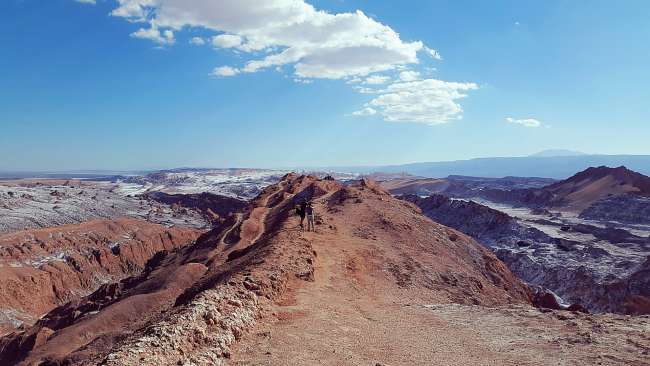
చిలీ ప్రయాణ నివేదికలు

